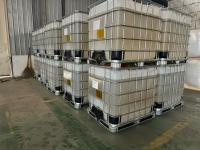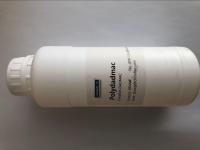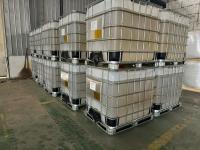Our Products
Product Center / polydadmac(C-587 C591 C592 C595)equivalent models can be replaced by Chinafloc-dadmac

PolyDADMAC, short for poly(diallyldimethylammonium chloride), is a high-charge cationic polymer widely used in water treatment, papermaking, and various industrial processes. It is formed by polymerizing the quaternary ammonium monomer diallyldimethylammonium chloride (DADMAC), resulting in a water-soluble, strongly positively charged polymer. Its most defining property is its ability to neutralize negatively charged particles and colloids quickly and effectively.
While PolyDADMAC has many uses, its main application is in water and wastewater treatment as a primary coagulant or coagulant aid for removing suspended solids, turbidity, and organic matter. Below is a detailed 1010-word explanation of its main application, mechanisms, and relevance across different industries.
1. Why PolyDADMAC Excels in Water Treatment
PolyDADMAC is a cationic polyelectrolyte with a very high charge density, typically in the range of 6.0–7.0 meq/g. This strong positive charge enables it to bind rapidly to negatively charged surfaces such as:
-
Clay particles
-
Organic matter
-
Microorganisms
-
Anionic polymers
In raw water or wastewater, most suspended solids carry a negative surface charge. This repels them from one another, keeping them dispersed and making them hard to settle or filter out. When PolyDADMAC is added, it:
-
Neutralizes the negative charges on particles.
-
Destabilizes colloids, breaking the electrostatic repulsion barrier.
-
Promotes agglomeration into larger flocs that settle faster.
This process is called coagulation, and it is the first step in clarifying water.
2. Main Application: Coagulant in Water & Wastewater Treatment
PolyDADMAC’s main industrial role is as a primary coagulant or a coagulant aid in both drinking water production and industrial wastewater treatment.
a) Drinking Water Treatment
In potable water treatment plants, PolyDADMAC is often used in the clarification stage. After intake, raw water is dosed with the polymer, which rapidly destabilizes colloidal particles. These form microflocs, which are then grown into larger flocs using gentle mixing and subsequently removed by sedimentation or filtration.
Key benefits:
-
Works efficiently over a broad pH range (4–10).
-
Produces less sludge compared to inorganic coagulants (e.g., alum or ferric chloride).
-
Reduces or eliminates the need for pH adjustment.
-
Lowers residual metal content in treated water.
b) Industrial Wastewater Treatment
Industries producing heavily polluted effluents—such as mining, textile dyeing, food processing, petrochemical refining, and paper mills—often rely on PolyDADMAC to treat wastewater. It can:
-
Remove color (especially from dyes).
-
Reduce chemical oxygen demand (COD).
-
Enhance removal of heavy metals when combined with other treatment steps.
-
Improve sludge dewatering in later stages.
3. Mechanism of Action in Coagulation
PolyDADMAC works through charge neutralization and, to a lesser extent, bridging flocculation:
-
Charge Neutralization
-
Negatively charged particles in water repel each other.
-
PolyDADMAC’s quaternary ammonium groups provide strong positive charges.
-
These charges bind directly to the particle surfaces, neutralizing their repulsion.
-
-
Particle Aggregation
-
Once charges are neutralized, van der Waals forces and hydrophobic interactions allow particles to collide and stick together.
-
Larger aggregates, or flocs, settle faster by gravity or are more easily filtered.
-
-
Improved Downstream Processes
-
Filtration: Larger, denser flocs pass through filters more efficiently.
-
Disinfection: Clarified water allows disinfectants like chlorine or UV to work more effectively.
-
4. Advantages of Using PolyDADMAC as Main Coagulant
PolyDADMAC offers several advantages over traditional inorganic coagulants like aluminum sulfate (alum) or ferric chloride:
-
Lower dosage: Because of its high charge density, much smaller quantities are needed.
-
Reduced sludge volume: Produces mainly organic sludge, which is easier to dewater and dispose of.
-
Wide pH range effectiveness: Avoids large pH swings in treated water.
-
Low corrosion potential: Non-metallic and non-oxidizing, reducing equipment wear.
-
Better performance in cold water: Inorganic coagulants often work poorly in low temperatures.
5. Regulatory and Safety Considerations
For drinking water applications, only high-purity grades of PolyDADMAC are used, with strict limits on residual monomers and impurities. Many countries require compliance with standards such as NSF/ANSI 60 for potable water treatment chemicals.
PolyDADMAC is considered non-toxic at typical application levels, but overdosing can lead to:
-
Residual polymer in treated water.
-
Taste or odor issues.
-
Interaction with anionic species leading to unwanted precipitation.
6. Integration with Other Treatment Chemicals
In practice, PolyDADMAC is often used in combination with:
-
Inorganic coagulants: Such as alum or ferric chloride, to boost floc strength.
-
Anionic flocculants: To increase bridging and create larger, denser flocs.
-
Polyaluminum chloride (PAC): For enhanced coagulation in challenging water sources.
By combining it with other agents, operators can fine-tune performance for specific water chemistries.
7. Other Applications Linked to Water Treatment
While coagulation is the main application, PolyDADMAC’s water treatment role extends into:
-
Sludge conditioning: Improves dewatering of wastewater sludge.
-
Oil-water separation: In petroleum and gas production, it helps break emulsions.
-
Membrane pretreatment: Used before ultrafiltration or reverse osmosis to reduce fouling.
Even in these cases, the core function—neutralizing negatively charged particles—remains the same.
8. Case Examples
-
Municipal Drinking Water Plant
-
Problem: High turbidity river water during rainy season.
-
Solution: Switched from alum to PolyDADMAC.
-
Result: Reduced chemical use by 60%, improved clarity, and lowered sludge disposal costs.
-
-
Textile Wastewater Facility
-
Problem: Deep-colored effluent from dyeing operations.
-
Solution: PolyDADMAC dosed ahead of sedimentation tanks.
-
Result: Over 85% color removal, significant COD reduction, and compliance with discharge standards.
-
-
Oil Refinery
-
Problem: Oily wastewater emulsions resistant to gravity separation.
-
Solution: PolyDADMAC addition upstream of dissolved air flotation (DAF).
-
Result: Faster oil recovery and improved effluent clarity.
-
9. Why Coagulation in Water Treatment Is the Main Application
PolyDADMAC is versatile enough to appear in paper mills, cosmetics, and mining operations, but all these uses are variations of one key property—its ability to neutralize negative charges and cause suspended particles to clump together.
The main application—water and wastewater coagulation—is central because:
-
Water treatment is a global, continuous necessity.
-
PolyDADMAC performs more efficiently than many alternatives.
-
Regulatory standards increasingly favor polymers that produce less sludge and have low residual metal content.
10. Future Outlook
PolyDADMAC will continue to play a major role in water treatment due to increasing demand for clean water, stricter regulations, and the need for cost-effective, high-performance chemicals. Future research areas include:
-
Biodegradable derivatives to address environmental concerns about persistent polymers.
-
Hybrid coagulants combining PolyDADMAC with natural biopolymers like chitosan.
-
Nanostructured flocculants for enhanced performance in ultrafine particle removal.
In summary:
PolyDADMAC’s main application is as a cationic coagulant for clarifying water and wastewater, leveraging its high charge density to neutralize negatively charged particles, destabilize colloids, and promote flocculation. This core function underlies its success in municipal drinking water plants, industrial effluent treatment, and specialized applications like oil-water separation. By working quickly, effectively, and across a wide range of conditions, PolyDADMAC remains one of the most important synthetic coagulants in modern water treatment technology.





